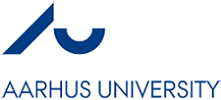Neuroscience and Neuroimaging

Neuroscience has in the past decades emerged as a fast expanding field of expert studies that encompass and combine other scientific fields from molecules to imaging. Presently, neuroimaging is developing rapidly and is relevant to a number of health science disciplines and has a great impact on the understanding, diagnosis and possible treatment of different devastating neurological diseases.
The interdisciplinary Master’s programme in Neuroscience and Neuroimaging is the first of its kind in Denmark and combines subjects from the Technical, Natural, and Life Sciences with the aim of producing graduates with state-of-the-art theoretical, technical, and clinical knowledge within neuroscience and neuroimaging. In particular, the broad approach to the field of neuroimaging, including the theory and engineering aspects underlying all cutting-edge image modalities is not offered as a master education anywhere else in Europe.
By uniting the expertise of Danish neuroscientist within basic, molecular, and clinical neuroscience and PET/MR based neuroimaging with Chinese scientists trained in advanced neurobiology, MEG and in the design of MRI hardware, the study program offers a unique educational environment not seen anywhere in the world. In addition, the study program includes courses in basic neuroscience from the molecular level to the clinical setting describing the different neurological diseases, the treatment of as well as the study of these including animal models used in neuroscience and neuroimaging research.
Study profile
The SDC Master’s programme in Neuroscience and Neuroimaging is developed by active researchers from both Denmark and China – uniting the most recent research, modern technology, and problem-oriented learning methods. This programme is based in China.
The unique combination of advanced imaging techniques and a broad knowledge in basic and clinical neuroscience topics enables the students to join the growing field of neuroscience and neuroimaging as well as fill the rising demand for graduates specialized in neuroimaging due to the increasing worldwide availability of high-resolution scanners.
Through the inclusion of top researchers as guest lectures, the students will be introduced to the latest advances in neuroscience research and techniques.
You will obtain knowledge in:
- Molecular, cellular, and clinical neuroscience
- Different neuroimaging technologies including, MEG, PET/SPECT, and fMRI
- Animal and other model systems used in neuroscience
- Electrophysiology and electroencephalography
- Advanced uses of neuroimaging modalities
- Hardware design for fMRI and PET scanners
- Cognitive neuroscience
Career opportunities
Graduates will have a unique education and cross-cultural insight. They will be obvious candidates for industrial R & D positions, academic research and/or clinical positions at neuro-oriented hospital departments or join neuroscience PhD schools at universities in Denmark and abroad. Currently almost three-quarters of graduates from this programme are enrolled in or have graduated a PhD programme. The MSc degree programme in Neuroscience and Neuroimaging targets students who would like to combine Neuroscience and modern advanced technology to create the new technologies and forms of therapy that will help the growing number of patients with brain disorders.
On completion of the programme, you receive a double degree and the following titles: Master of Science in Neuroscience and Neuroimaging from Aarhus University and Master of Neurobiology/Biophysics from the University of Chinese Academy of Sciences.
Na studia magisterskie mogą kandydować wszyscy, którzy ukończyli studia licencjackie lub inżynierskie (studia I stopnia), studia magisterskie lub studiują na ostatnim roku studiów I-stopnia. Studia, które planujesz powinny mieć zbliżony profil do tych obecnych lub ukończonych, ponieważ w procesie rekrutacji kluczowa jest ich zgodność programowa.
Wykaz punktów ECTS – osoby, które są jeszcze w trakcie studiów, muszą załączyć wypis punktów ECTS, w którym będzie wykazane, jakie przedmioty były realizowane na studiach oraz ile punktów za nie otrzymano.
Dyplom ukończenia studiów licencjackich lub inżynierskich – jeśli jesteś absolwentem wyższej uczelni, nie potrzebujesz wypisu, wystarczy załączyć dyplom ukończenia studiów wraz z suplementem (w języku angielskim lub oryginał z tłumaczeniem)
Course description - należy przygotować dokument, zbierający cały sylabus ze studiów licencjackich. Takie sylabusy najczęściej są do pobrania na stronie uniwersytetu. Należy je przetłumaczyć na język angielski (można samodzielnie) i złączyć w jeden dokument. Warto też zapytać w dziekanacie uczelni, czy nie dysponują wersją angielską.
Oficjalna skala oceniania Twojej uczelni - możesz dostać taki dokument w dziekanacie Twojej uczelni lub skonstruować samodzielnie. W obu przypadkach dokument powinien zawierać pieczątkę dziekanatu.
Spełnienie wymagań w zakresie języka angielskiego można udokumentować w jeden z następujących sposobów:
IELTS – 6.5
TOEFL – 83 (Aarhus University TOEFL kod - 8935)
Uwaga: wymagania językowe mogą ulec zmianie. Przed wysłaniem aplikacji upewnij się jakie są wymagania językowe na konkretny kierunek bezpośrednio na stronie uczelni.
W przypadku zdawania certyfikatu IELTs upewnij się, czy uczelnia oprócz wymagań oceny końcowej nie ma również wymagań odnośnie ocen cząstkowych.
